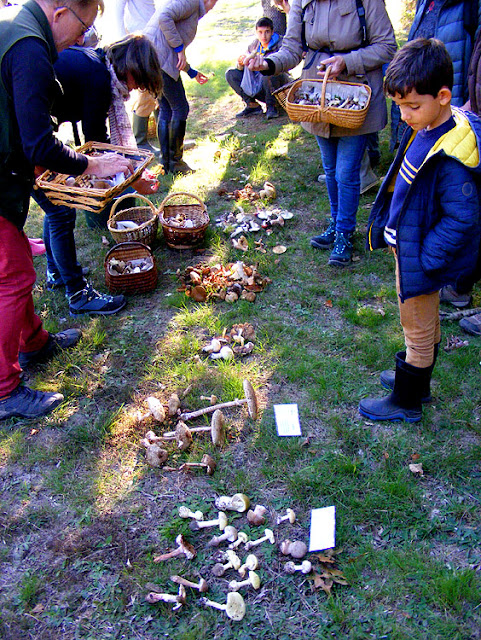 |
| Sorting fungi into their families after an outing so they can be identified to species level. |
 |
| Sulphur Tuft Hypholoma fasciculare (Fr. Hypholome en touffe). |
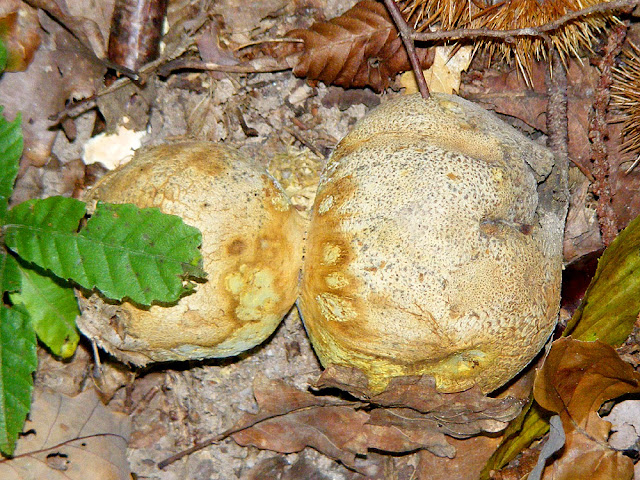 |
| Common Earthball Scleroderma citrinum (Fr. Scleroderme commun). |
 |
| Brown Rollrim Paxillus involutus (Fr. Paxille enroulé), highly toxic and growing very close to the prized edible mushroom below, and looking superficially very like it. Beware! |
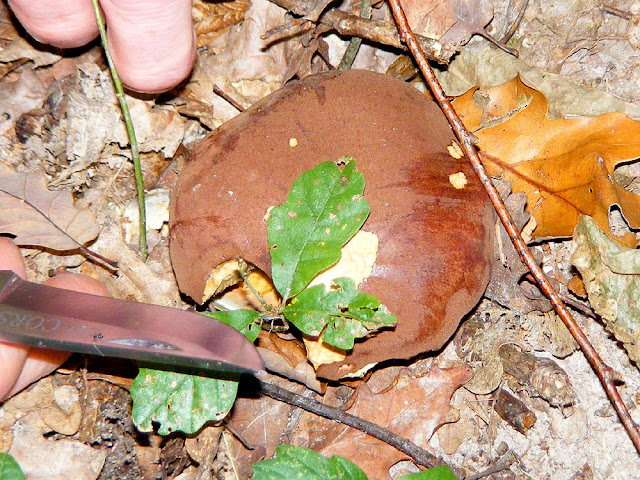 |
| Bay Bolete Imleria badia (Fr. Bolet bai), considered an excellent edible species. But recent studies have shown that boletes accumulate radioactivity at a considerable rate. |
 |
| Saffron Milkcap Lactarius deliciosus (Fr. Lactaire delicieuse), edible and gathered for the table here, but only commercially harvested in the south of France and in Spain. |
 |
| Common Puffball Lycoperdon perlatum (Fr. Vesse de loup perlée). |
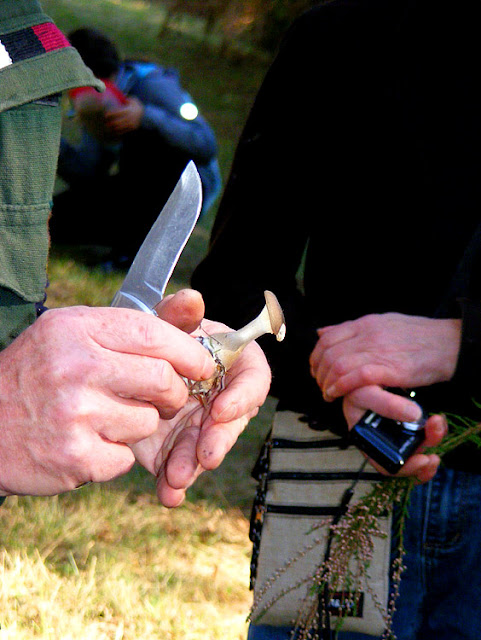 |
| Miller Clitopilus prunulus (Fr. Meunier), so called because of its strong smell of flour. Could be mistaken for a Clitocybe sp. |
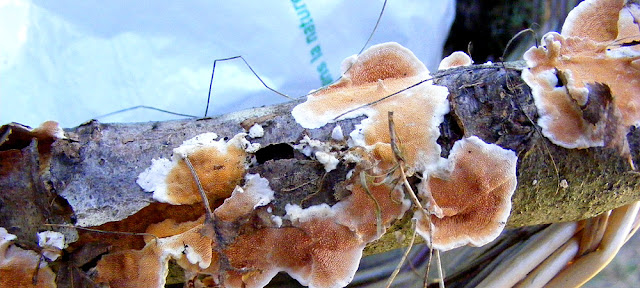 |
| Split Porecrust Schizopora paradoxa (Fr. Polypore étrange). |
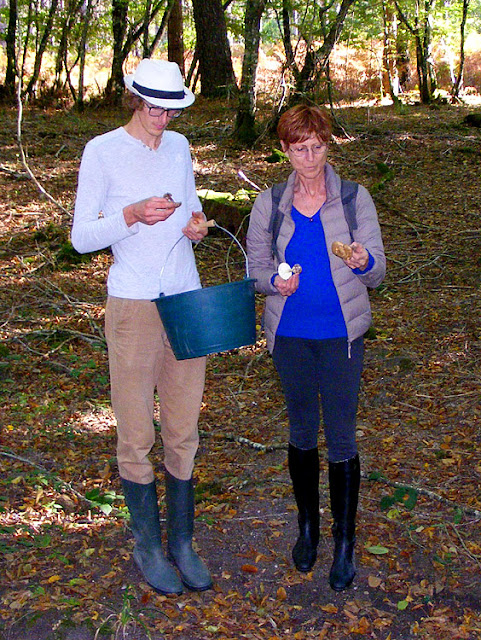 |
| This pair of fungi foraging newbies have just been told that the mushrooms they are holding are toxic. |
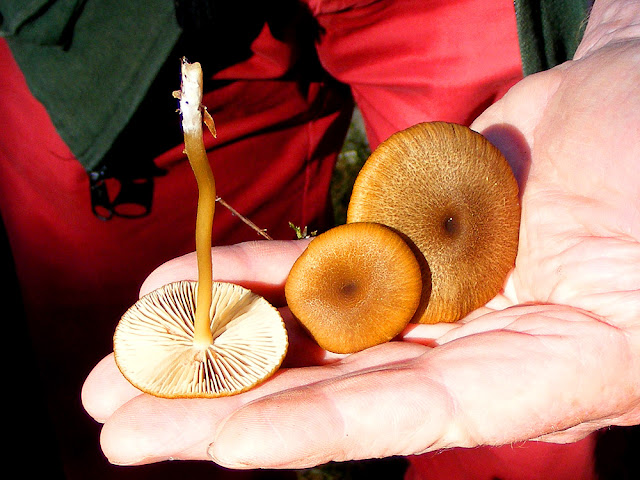 |
| A pinkgill Entoloma sp. |

1 comment:
So many mushrooms in your area. I don't think we have as many here in the Vaucluse. I went out a picked a few and took them to the pharmacie, none were edible but none fatal either. I will stick to chanterelles, trompettes de mort, and pied du mouton.
bonnie near carpentras
Post a Comment